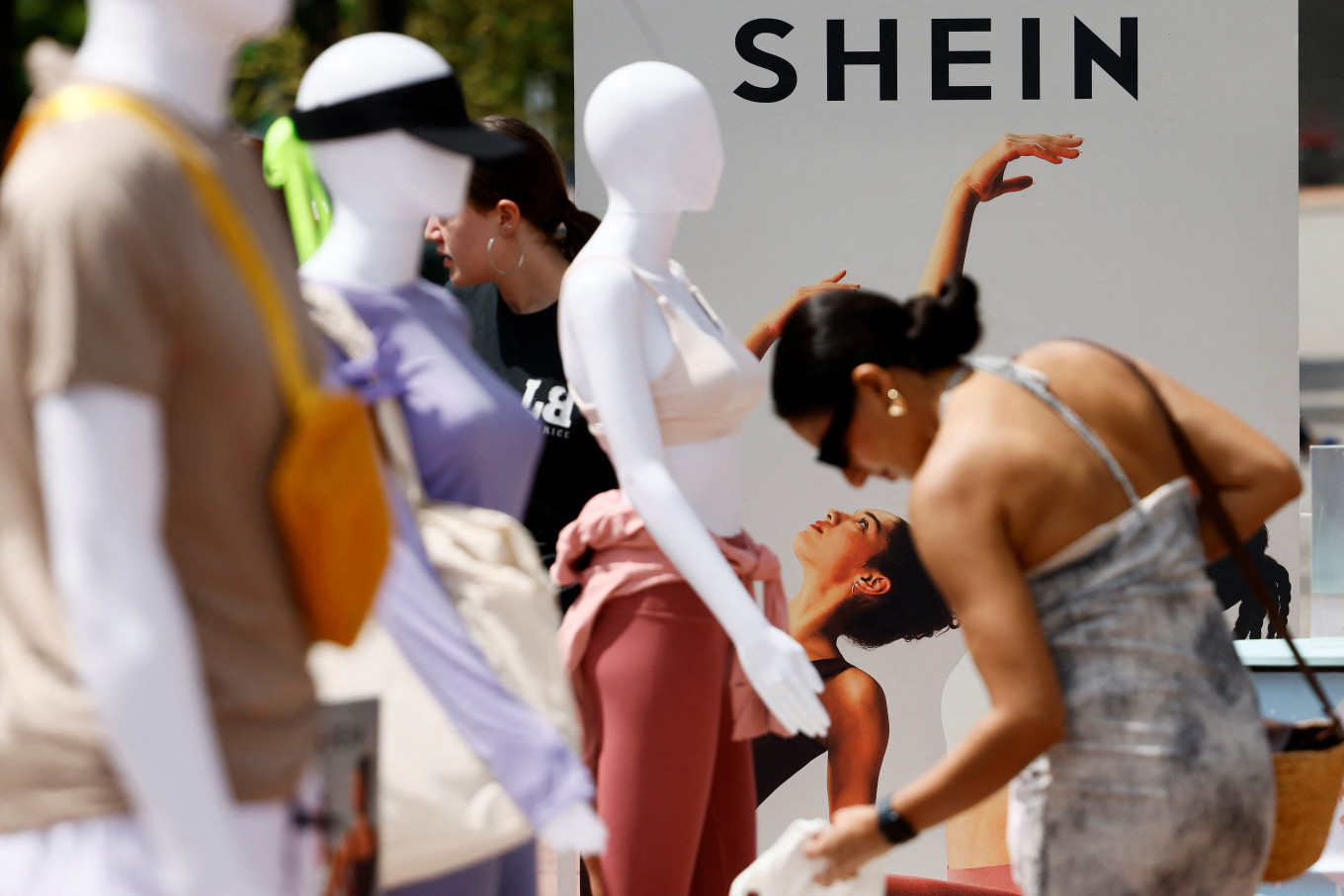Popular Reads
Top Results
Can't find what you're looking for?
View all search resultsPopular Reads
Top Results
Can't find what you're looking for?
View all search resultsCreating pathways for women in AI: A call to action
Women bring a unique and invaluable perspective to innovation—whether it is designing AI-driven virtual makeup applications or personal shopping assistants, our lived experiences shape technology.
Change text size
Gift Premium Articles
to Anyone
 A woman shops on May 18, 2024, at fast fashion
brand Shein's pop-up store in Ottawa. The Seoul municipal government said on Tuesday that it had found toxic substances in amounts hundreds of times above acceptable levels in children’s products sold by Chinese-founded online shopping giant Shein. (Reuters/Blair Gable)
A woman shops on May 18, 2024, at fast fashion
brand Shein's pop-up store in Ottawa. The Seoul municipal government said on Tuesday that it had found toxic substances in amounts hundreds of times above acceptable levels in children’s products sold by Chinese-founded online shopping giant Shein. (Reuters/Blair Gable)
I
t is impossible to name an industry or sector that has not been transformed by artificial intelligence. Today, the technology is being used in health care for disease diagnosis, finance for fraud detection, manufacturing for predictive maintenance, transportation for self-driving cars and retail for, well, more than what most people might realize.
The retail industry—which contributed US$5.28 trillion to the United States economy in 2024—is using AI to fundamentally reshape the ways consumers shop and interact with brands and retailers. Whether it is through virtual fitting rooms, tailored product recommendations or chatbots and virtual assistants, AI systems are creating personalized shopping experiences that touch nearly every step of the buyer’s journey.
To create effective AI systems, those building them must understand the needs, preferences and experiences of their primary consumer base. Within retail, that would be women, who represent half of the global population but influence a staggering 70-80 percent of global consumer spending—especially in areas like beauty, one of the fastest-growing industries in the world.
Women are uniquely positioned to truly connect with these audiences and create AI systems that speak to their needs—so it is imperative that they are involved in developing technology that pushes the industry forward.
AI systems are not neutral. They are shaped by the biases, values and perspectives of their creators. Unfortunately, women make up less than a third of AI professionals and only 18 percent of AI researchers globally—representing a significant loss of potential talent in one of the most crucial industries of our time. As AI becomes increasingly central to innovation and economic growth, we are essentially operating at partial capacity.
This technology can only reach its full potential if it is created by diverse groups that understand and represent the varied needs of the global consumer base. To unlock this, industry leaders must actively work to create pathways for more women to enter and thrive within the AI space, which will inevitably lead to the betterment of industries across the board.
Although more women are graduating and entering science, technology, engineering and mathematics (STEM) jobs today than ever before, they make up just 28.2 percent of the STEM workforce. Of those working in STEM, they are typically concentrated at the entry-level and are less likely to hold leadership positions.
A recent Women in AI report conducted by the AI Forward Alliance found that 600,000 US high school girls must be actively engaged in evidence-based technology programs every year to achieve 50-50 gender parity in the AI workforce by 2035. Simply offering STEM classes is not sufficient. Educators must partner with institutions, non-profits, state and local initiatives to fund and promote programs that expose young girls to technology at an early age.
These initiatives should focus not only on technical skills but also on building confidence, demonstrating the real-world impacts of AI and embracing the interests of women pursuing AI careers within consumer-facing industries. Encouraging young women to explore AI projects in beauty, fashion and wellness could lead to a pipeline of talent that is both skilled in AI and who understand the social and cultural impact their work will have on women as consumers.
With software development jobs expected to grow at a rate of 17 percent from 2023 to 2033, we must streamline education and focus on practical skills that prepare women and girls for an AI-driven future.
Investing in women-led start-ups is a strategic decision that can drive more creative, impactful and inclusive innovation. After all, the success of many companies comes not just from technological breakthroughs, but from a deep understanding of consumer needs and behaviors—a perspective that women uniquely bring to the table.
In beauty and wellness, women-led start-ups are often better positioned to create AI-driven solutions that resonate with women’s lived experiences, from skincare diagnostics to cosmetic procedure simulations and hair-type analyses. Investing in these companies drives more thoughtful, consumer-centered technology in industries where women are the primary decision makers and consumers.
Yet, women-led start-ups, especially in the tech space, continue to face significant funding gaps. In 2023, female-only founded start-ups received less than three percent of venture capital funding compared to their male counterparts. This disparity is a missed opportunity. When women are given the resources, mentorship and funding they need, they deliver innovation and inspire entire ecosystems of future female leaders in tech.
What’s more, start-ups led by women are more likely to focus on creating inclusive products and services, which in turn leads to solutions that resonate with a wider audience. Supporting female entrepreneurs empowers industries to evolve in ways that reflect the diverse world we live in.
In 2022, the global hiring rate for women in leadership roles topped 38 percent—and it has fallen each year since, now down to 36 percent. Not only that, but female representation at the leadership level has risen by less than one percent in six years. It is a slow but steady downward trend that should set off alarm bells across sectors.
Many business leaders recognize the value of having women in AI leadership positions, but they fail to give women these opportunities. Seventy-three percent of business leaders believe having more women in leadership roles is important for mitigating gender bias in AI, but only 33 percent currently have a woman in charge of decision-making for AI strategy.
Woman leadership within AI companies that focus on consumer-facing industries has the potential to transform how AI systems cater to women. As a woman leader in AI, I have witnessed firsthand the profound impact of developing AI systems that truly address consumer pain points.
Throughout my career in tech, I have faced challenges that many women in this field can relate to, but those experiences have only deepened my passion for fostering the next generation of women leaders in AI and technology. Women bring a unique and invaluable perspective to innovation—whether it is designing AI-driven virtual makeup applications or personal shopping assistants, our lived experiences shape technology in ways that better serve diverse consumer needs.
When women see other women in senior executive positions that are leading the way in AI development, they are more likely to believe that these opportunities are attainable for themselves. This diversity in leadership sets a powerful precedent and sends a message that women’s voices are not only welcomed but needed in the conversation about the future of AI.
We cannot look to a future transformed by AI without addressing the inequity that is still holding women back.
***
The writer is CEO and founder of Perfect Corp. The views expressed are personal.










